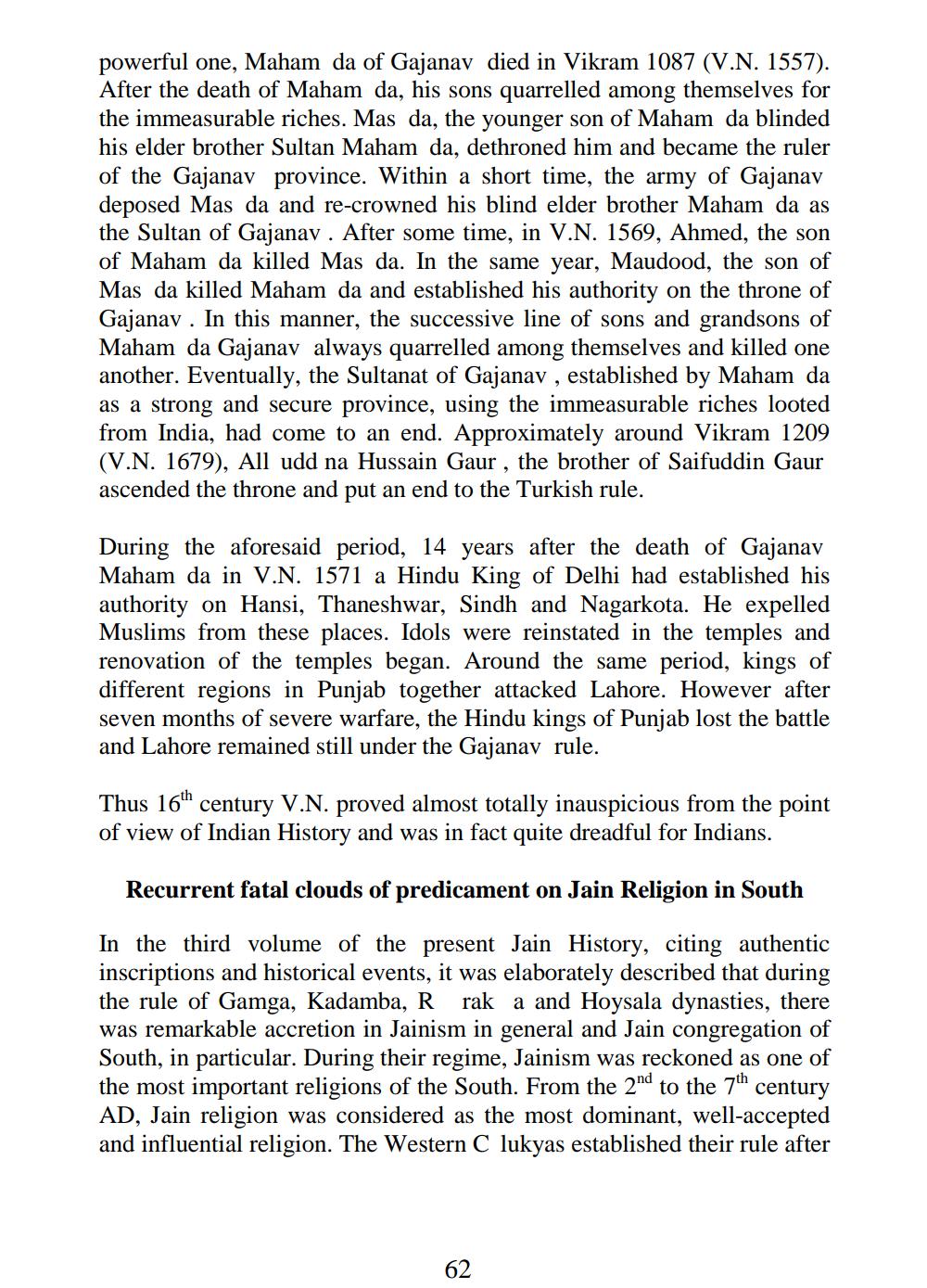________________
powerful one, Maham da of Gajanav died in Vikram 1087 (V.N. 1557). After the death of Maham da, his sons quarrelled among themselves for the immeasurable riches. Mas da, the younger son of Maham da blinded his elder brother Sultan Maham da, dethroned him and became the ruler of the Gajanav province. Within a short time, the army of Gajanav deposed Mas da and re-crowned his blind elder brother Maham da as the Sultan of Gajanay. After some time, in V.N. 1569, Ahmed, the son of Maham da killed Mas da. In the same year, Maudood, the son of Mas da killed Maham da and established his authority on the throne of Gajanav . In this manner, the successive line of sons and grandsons of Maham da Gajanav always quarrelled among themselves and killed one another. Eventually, the Sultanat of Gajanav , established by Maham da as a strong and secure province, using the immeasurable riches looted from India, had come to an end. Approximately around Vikram 1209 (V.N. 1679), All udd na Hussain Gaur, the brother of Saifuddin Gaur ascended the throne and put an end to the Turkish rule.
During the aforesaid period, 14 years after the death of Gajanav Maham da in V.N. 1571 a Hindu King of Delhi had established his authority on Hansi, Thaneshwar, Sindh and Nagarkota. He expelled Muslims from these places. Idols were reinstated in the temples and renovation of the temples began. Around the same period, kings of different regions in Punjab together attacked Lahore. However after seven months of severe warfare, the Hindu kings of Punjab lost the battle and Lahore remained still under the Gajanav rule.
Thus 16th century V.N. proved almost totally inauspicious from the point of view of Indian History and was in fact quite dreadful for Indians.
Recurrent fatal clouds of predicament on Jain Religion in South
In the third volume of the present Jain History, citing authentic inscriptions and historical events, it was elaborately described that during the rule of Gamga, Kadamba, R rak a and Hoysala dynasties, there was remarkable accretion in Jainism in general and Jain congregation of South, in particular. During their regime, Jainism was reckoned as one of the most important religions of the South. From the 2nd to the 7th century AD, Jain religion was considered as the most dominant, well-accepted and influential religion. The Western C lukyas established their rule after




